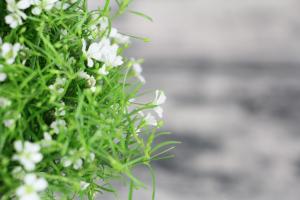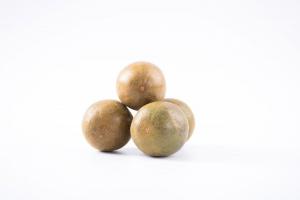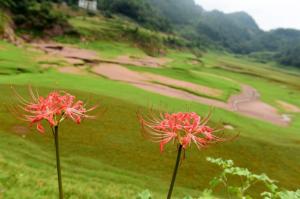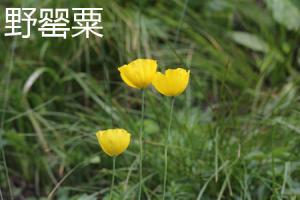A Hardy Small Tree to Plant Close to House
Choosing the right tree to plant near your home can be a challenging task. You want something that will look attractive, provide shade or privacy, and add value to your property. However, you should also consider the tree's size, shape, and maintenance requirements, especially if you have limited space or live in a windy, dry, or cold area. A hardy small tree can be an excellent choice for planting close to your house, as it offers many advantages.
Benefits of Planting a Hardy Small Tree
A hardy small tree can provide several benefits, such as:
Adding beauty and character to your landscape, especially if you choose a tree with colorful leaves, flowers, or fruits.
Offering shade and reducing the amount of heat that enters your home in the summer, which can lower your energy bills and improve your comfort.
Providing privacy and blocking unwanted views from neighbors or the street, which can enhance your sense of security and tranquility.
Absorbing carbon dioxide and other pollutants from the air, which can promote a healthier environment and reduce your carbon footprint.
Attracting birds, butterflies, and other wildlife, which can add more interest and diversity to your garden.
Being easy to maintain and requiring little pruning, watering, or fertilizing, which can save you time, money, and resources.
Being resistant to pests, diseases, and harsh weather conditions, which can ensure the tree's longevity and reduce the risk of damage to your property.
Overall, planting a hardy small tree close to your house can be a wise investment that pays off in many ways.
Top Hardy Small Trees for Planting Near Your House
Here are some of the most popular and reliable hardy small trees that you can consider planting near your house:
1. Crabapple (Malus)
Crabapple is a versatile and attractive tree that can grow up to 20 feet tall and 25 feet wide, depending on the cultivar. It has showy flowers in spring, colorful fruits in fall, and glossy foliage that turns yellow, orange, or red. Crabapple is also resistant to many diseases and pests, such as scab, cedar apple rust, and Japanese beetles, and can adapt to various soil types and climates. Some good varieties to try are 'Prairiefire,' 'Profusion,' 'Royal Raindrops,' and 'Sargent.'
2. Redbud (Cercis)
Redbud is a graceful and delicate tree that can grow up to 30 feet tall and 25 feet wide, depending on the cultivar. It has heart-shaped leaves that emerge as a reddish-purple color in spring, then turn green in summer and yellow in fall. Redbud also has pink or lavender flowers that bloom before the leaves appear, creating a stunning display. It prefers well-drained soil and partial shade but can tolerate some drought and heat. Some good varieties to try are 'Forest Pansy,' 'Rising Sun,' and 'Oklahoma.'
3. Dogwood (Cornus)
Dogwood is a classic and elegant tree that can grow up to 25 feet tall and 30 feet wide, depending on the cultivar. It has white or pink flowers that bloom in spring, followed by red or orange berries in fall, and dark green foliage that turns purplish-red in autumn. Dogwood prefers rich and acidic soil and partial shade but can adapt to different soil types and light conditions. Some good varieties to try are 'Cherokee Brave,' 'Kousa,' 'Stellar Pink,' and 'Venus.'
4. Serviceberry (Amelanchier)
Serviceberry is a charming and useful tree that can grow up to 20 feet tall and 15 feet wide, depending on the cultivar. It has white flowers that bloom in early spring, then turn into juicy and sweet blue-black fruits in early summer, and purple-red foliage that turns golden-yellow in fall. Serviceberry is also tolerant of shade, drought, and different soil types and pH levels. Some good varieties to try are 'Autumn Brilliance,' 'Cumulus,' 'Princess Diana,' and 'Robin Hill.'
5. Japanese Maple (Acer palmatum)
Japanese Maple is a popular and striking tree that can grow up to 20 feet tall and 25 feet wide, depending on the cultivar. It has delicate and lacy leaves that come in various colors and shapes, such as green, red, purple, and variegated, and turn brilliant hues in fall. Japanese Maple also has an interesting and intricate branching pattern that adds visual interest to the landscape. It prefers well-drained and slightly acidic soil and partial shade but can be grown in full sun with enough water and protection from wind and frost. Some good varieties to try are 'Bloodgood,' 'Fireglow,' 'Sango Kaku,' and 'Viridis.'
Tips for Planting and Caring for a Hardy Small Tree Near Your House
Once you have chosen the right hardy small tree to plant near your house, you should follow these tips to ensure its successful growth and health:
Prepare the soil by loosening it and adding compost or peat moss to improve its fertility, drainage, and texture.
Plant the tree at the proper depth and distance from the house, depending on its size and root system, and water it well after planting.
Apply mulch around the tree to conserve moisture, suppress weeds, and protect the roots from temperature extremes.
Prune the tree lightly and selectively, preferably in late winter or early spring, to remove dead, damaged, or crossing branches, and shape the canopy as needed.
Water the tree deeply and regularly, especially during dry or hot spells, and avoid overwatering or underwatering.
Fertilize the tree sparingly and only if necessary, using a slow-release, balanced, and organic fertilizer, and follow the manufacturer's instructions.
Monitor the tree for signs of pests or diseases, such as yellowing leaves, holes, or spots, and treat them promptly and appropriately, using the least toxic and effective methods.
By following these guidelines, you can enjoy the beauty, shade, and benefits of a hardy small tree near your house for years to come.

 how many times do yo...
how many times do yo... how many planted tre...
how many planted tre... how many pine trees ...
how many pine trees ... how many pecan trees...
how many pecan trees... how many plants comp...
how many plants comp... how many plants can ...
how many plants can ... how many plants and ...
how many plants and ... how many pepper plan...
how many pepper plan...






























